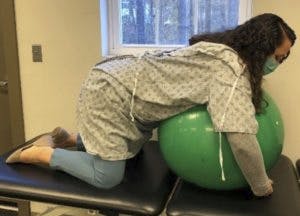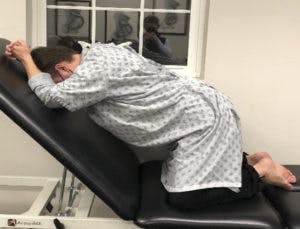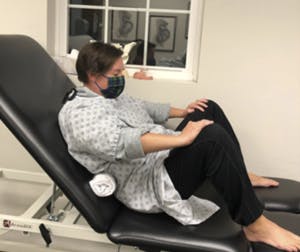Labor and Delivery: Pushing with an Epidural
Did you know pelvic physical therapists can help you determine which position would be best for you to labor in?
Epidurals can make it more challenging to move during labor, but with a little bit of planning, you can still get into an optimal position!
WHAT’S AN OPTIMAL POSITION?
For vaginal birth, we want to be in a position where the sacrum can MOVE. The sacrum is that bony triangle between your butt cheeks that ends in your tailbone. Having the sacrum free to move during childbirth can increase the size of the pelvic outlet by up to 28%. Laying on your back pins your sacrum against the bed and makes it more difficult for the sacrum to move. Most hospitals require you to stay in bed when you’ve had an epidural, but that doesn’t mean you have to stay on your back! There are many ways to promote mobility of the sacrum, even if you are required to stay in bed.
The sidelying position is one of the most comfortable pushing positions with an epidural. It allows your sacrum to move without requiring too much work to hold yourself up. Try propping a pillow under your top knee or having your partner hold up your top leg.


In the sidelying position, you can have your partner apply counterpressure to your glutes as you push with your top leg into their abdomen. Some women report this push/pull pressure is helpful for pain management.

Quadruped (on all 4s) position allows the sacrum to move and can be a great position for relaxation of the pelvic floor muscles. Try letting your upper body rest on an exercise ball to decrease fatigue through the arms and back.

Another way to take pressure off your upper body while on all fours is to raise the head of the bed.

If you do choose to labor on your back, you can still take pressure off your sacrum by raising the head of the bed and placing a towel roll under your lower back. This also allows gravity to work in your favor rather than staying fully horizontal.

At Progress PT – Midlothian, we help moms have a more educated and empowered labor and delivery! A pelvic physical therapist is a great addition to your birth team. We can help you figure out the best birthing position for your musculoskeletal needs, help you practice pain management techniques, pushing techniques, and even optimal positions for feeding baby postpartum to reduce back pain! With 20 years combined experience, we have treated hundreds of pregnant mamas. We would love to help you have as smooth a birth as possible!
